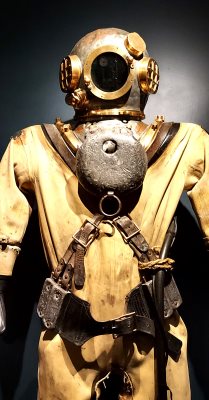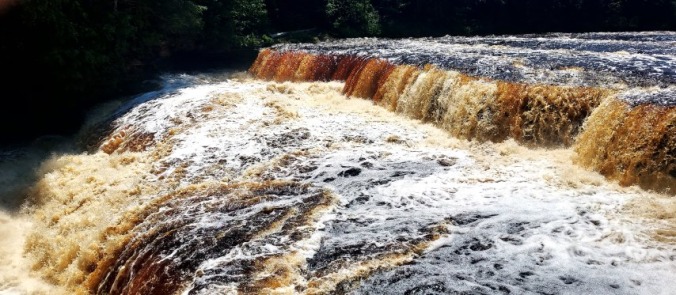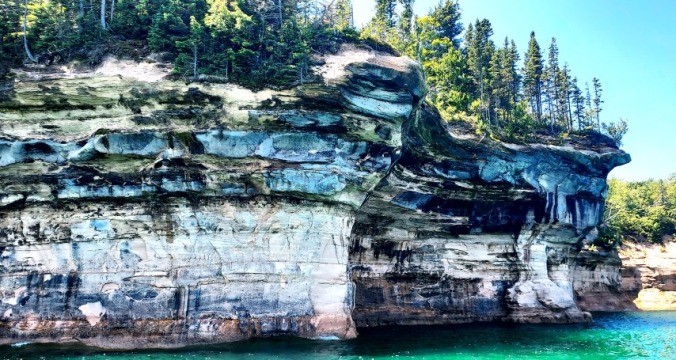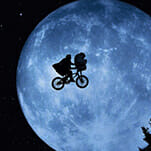Michigan: The Wild, Forgotten North
Photos by Geoffrey Himes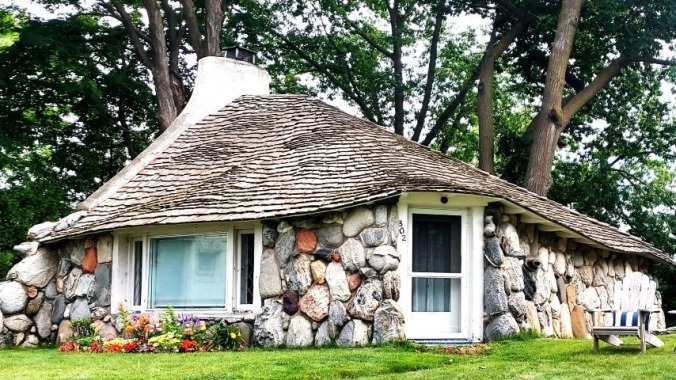
Hold up your flattened right hand with the palm facing you, the fingers closed and the thumb hooked upward. What you’re seeing is an outline of Michigan’s lower peninsula. Detroit and Ann Arbor are on the fleshy bulge of the thumb; Lansing is in the valley of your palm; Grand Rapids is on the left ridge, and Saginaw is in the loose skin between your thumb and index finger.
Most of the state’s population is concentrated in these cities near the wrist (the border with Ohio and Indiana). But the thumb and four fingers are well worth visiting—despite their unfortunate politics—flush as they are with natural beauty, fresh produce and eccentric characters. And the Upper Peninsula—connected to the lower only by a bridge—is even wilder and more colorful.
In the crack between your pinkie and ring finger is Traverse Bay, and at the bottom of the bay is Traverse City, the self-proclaimed “Cherry Capital of the World.” In July and August, it’s hard to argue with the boast, for every few miles of highway brings another roadside stand selling paper sacks of cherries—both sour and sweet—and most restaurants serve at least one version of cherry pie.
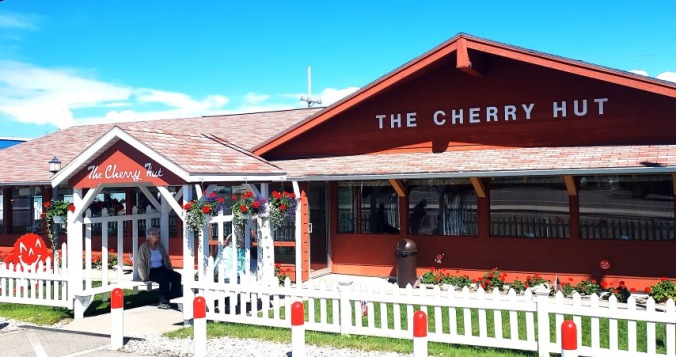
The Cherry Hut
My favorite restaurant, though, is the Cherry Hut in nearby Beulah. The ranch-house architecture is painted in a Santa Claus red-and-white color scheme behind a white-picket fence. The menu is studded with cherry items. When I was there this summer, I ordered a chicken-and-cherry-salad sandwich on croissant, a cherry muffin, and a slice of cherry pie topped with a scoop of cherry-chocolate-chip ice cream. I resisted a glass of cherryade, because, after all, I’m on a diet.
Once the school year starts, the roadside stands and restaurants replace the cherries with apples. And with the apples come the autumn leaves, which are especially attractive along the long coast of Lake Michigan or the small shorelines of the inland lakes.
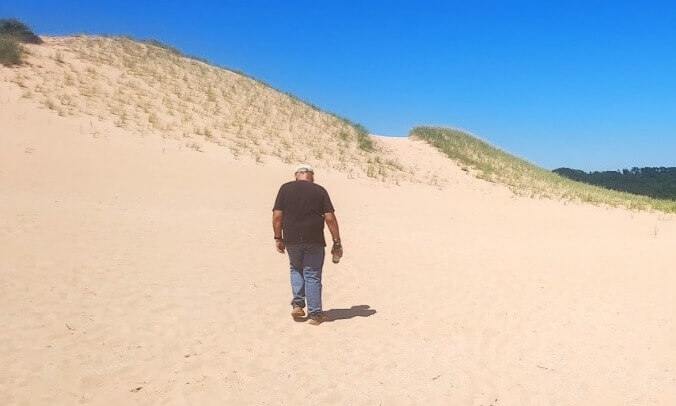
Sleeping Bear Dunes
The Great Lakes are so huge that they create towering sand dunes much like the Atlantic and Pacific Oceans. Perhaps the best example of this is Sleeping Bear Dunes National Lakeshore. This national park is located just 40 minutes west of Traverse City.
The Dune Climb is the park’s biggest attraction: a 284-foot sloping wall of white sand that entices hundreds—and not just kids—to climb it every day. They soon find out that climbing sand is not like climbing a dirt mountain trail. For every two steps up the dune, you slip back a step. Step up; slide back. Step up; slide back. And when you reach the top, you’re still a mile-and-a-half and five big dunes away from Lake Michigan.
Most people just turn around and consider what they’re just accomplished. Beyond the parking lot are impressive views of Little Glen Lake. If you want to get away from the chattering crowds, you can simply make a right turn and follow the ridgeline for the length of a football field or two, and you’ll find yourself in the solitude of sand, wind and grasses.
-

-

-

-

-

-

-

-

-

-

-

-

-

-

-

-

-

-

-

-

-

-

-

-

-

-

-

-

-

-

-

-

-

-

-

-

-

-

-

-

